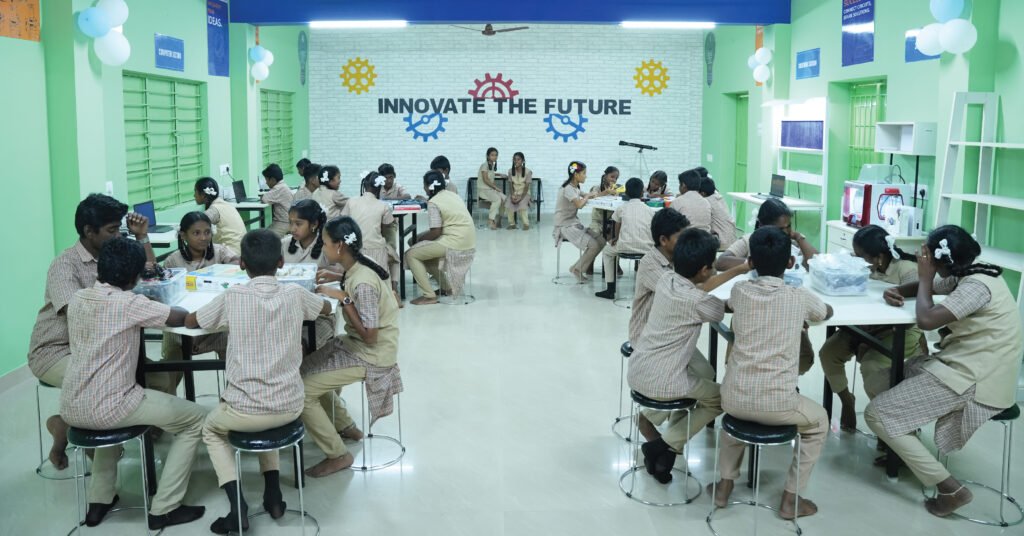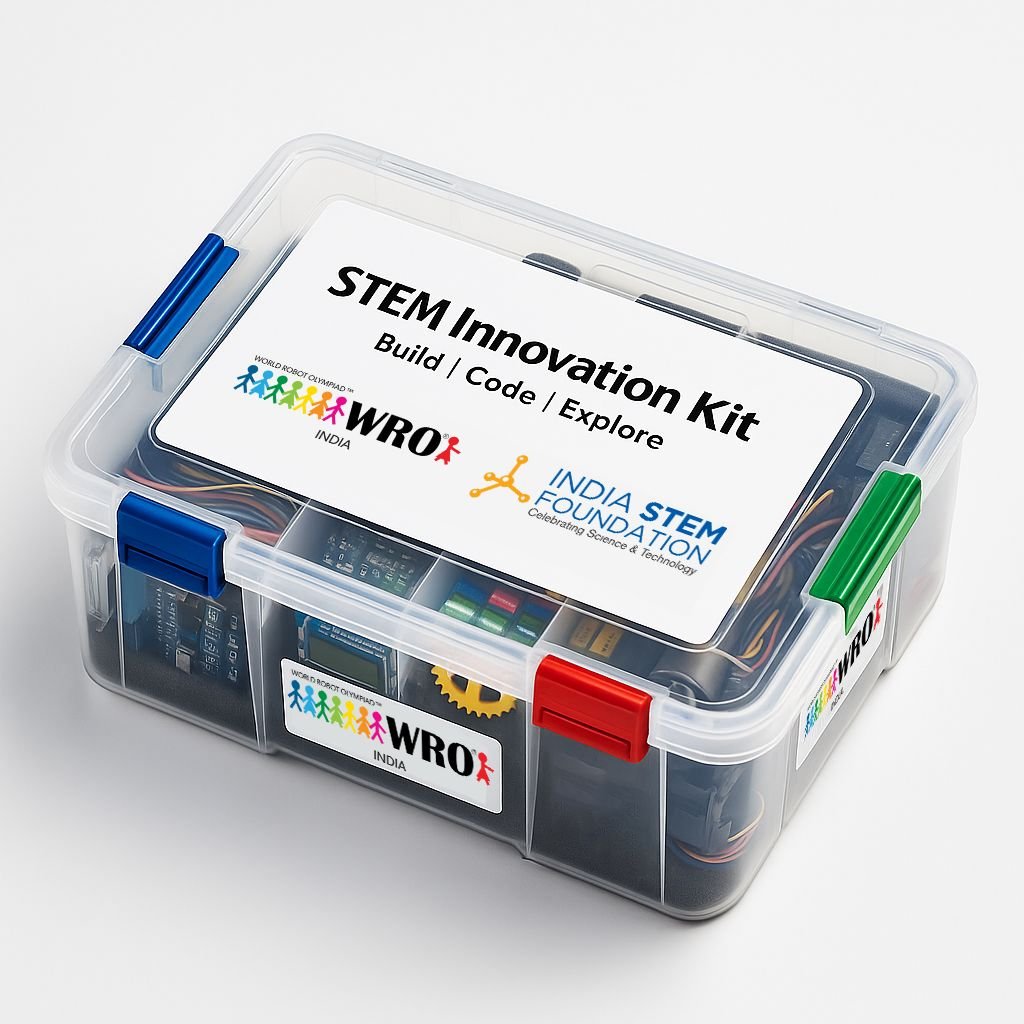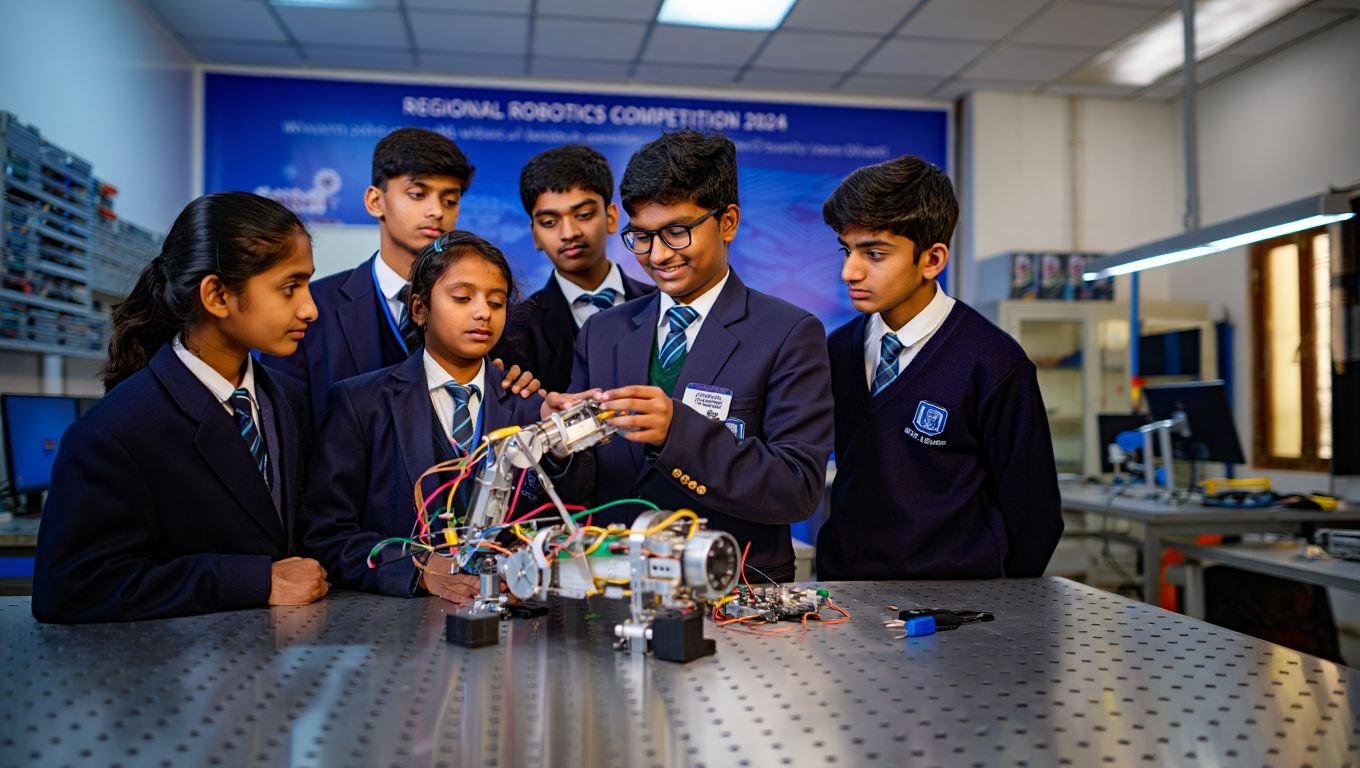In today’s society, STEM fields—science, technology, engineering, and mathematics—have grown in significance. STEM education addresses the urgent need for a highly skilled workforce in disciplines critical to technological growth, development, and innovation. Students with a STEM background are more equipped to handle difficult circumstances, stay current with new technology, and advance society.
Given how quickly technology is advancing, STEM education is becoming increasingly important. It helps students improve their critical thinking skills while motivating them to investigate, evaluate, and solve real-world issues. Furthermore, STEM promotes creativity, adaptability, and teamwork—elements that are essential in the competitive and internationally linked job market of today.
There are several advantages to teaching STEM to kids, which might help the country as a whole. Early development of critical thinking, creativity, and problem-solving abilities is beneficial. The groundwork for upcoming academic and professional aspirations is laid by this crucial learning experience. Second, students may learn about the wonders of science, technology, engineering, and math in an interactive and captivating way by participating in STEM education. This kindles interest, pushes for exploration, and makes discoveries easier, all of which deepen our comprehension of how the world works. Youngsters who take STEM classes become more robust and adaptive adults, better preparing them for a career that is always changing due to technological breakthroughs.
STEM Education: Developing Skills
STEM education fosters children’s curiosity and excitement for learning via practical exercises, experiments, and interactive learning. Their early experiences instill in them a lifelong love of learning. Furthermore, ensuring that everyone can participate, regardless of gender, socioeconomic situation, or location, and promoting inclusion and accessibility also teaches vital 21st-century skills. The availability of resources, scholarships, and mentorship programs increases the likelihood of underrepresented groups engaging in STEM education.
By encouraging research and creation and placing a strong emphasis on experiential learning, critical thinking, and creative thinking, STEM programs help to create an inventive culture. Setting a high priority on practical experience gives students access to state-of-the-art tools, resources, and technology for in-depth learning. Tasks and initiatives that require problem-solving stimulate the creative mind and lead to innovative ideas. Critical thinking, which helps students assess the evidence, refute assumptions, and draw well-reasoned conclusions, is another area of concentration. Assigning students to experienced mentors who can convey information, provide guidance, and provide perceptive feedback is one of the key components. These creatively stimulating mentorship programs assist aspiring researchers and inventors.
Innovative Approaches to Engage Students
Hands-on Learning: Students may apply STEM principles in real-world projects by using maker spaces, science fairs, and robotics workshops.
Coding and Computational Thinking: Programming languages and computational thinking skills are taught in coding clubs and boot camps.
Mentorship Programs: Providing assistance and practical insights into STEM professions, these programs pair students with mentors from the industry or universities.
Virtual Reality and Simulation: Using immersive virtual reality (VR) simulations, one may investigate intricate scientific phenomena or engineering concepts.
Gamification is the process of introducing game-based learning tools to enhance the dynamic, competitive, and captivating nature of STEM education.
Project-based learning involves assigning multidisciplinary tasks that call for cooperation, problem-solving skills, and the use of STEM knowledge to address real-world issues.
Industry Partnerships: Working together on collaborative projects, internships, or guest lectures that introduce students to real-world STEM applications.
Including the arts (STEAM) in STEM subjects to encourage creativity and multidisciplinary thinking is known as STEAM integration.
Putting together field visits to science centers, labs, or business locations in order to provide students with practical experience and stimulate their interest is known as experiential learning.
Competitions and Challenges: Students can be motivated and challenged by taking part in STEM competitions like scientific Olympiads, coding challenges, or robotics competitions.
The advancement of STEM education across the country is greatly aided by the India STEM Foundation. Students’ creativity and problem-solving abilities are encouraged through programs like the National STEM Awards and the Indian Robot Olympiad. The organization promotes experiential learning and professional growth in STEM fields through outreach programs, workshops, and teacher training sessions. The STEM ecosystem is strengthened by partnerships with academic institutions, business sectors, and governmental organizations that connect education to practical applications. The foundation’s mission is to develop a trained workforce that can propel technical progress and economic prosperity in India by promoting inclusion and diversity in STEM professions.
Impact of STEM Education on Society
Through stimulating economic growth, addressing global concerns, and encouraging innovation, STEM education has a significant impact on society. It gives people the technical, analytical, and problem-solving abilities needed to advance business and technology. Professionals with a background in STEM are at the forefront of research and development in industries such as information technology, renewable energy, and healthcare, which results in innovations that enhance sustainability and quality of life. Additionally, STEM education ensures national and international competitiveness by producing a workforce that is flexible enough to keep up with the rapid improvements in technology. STEM professions and education equips communities to address difficult challenges and create a successful, knowledge-driven society by educating future leaders and innovators.
Future Directions and Emerging Trends
With cutting-edge strategies and new developments, STEM education is well-positioned to engage the next generation. With its ability to provide realistic simulations of scientific ideas and engineering designs, virtual and augmented reality will completely transform experiential learning. STEM programs will use AI and machine learning to better prepare students for automation and data-driven decision-making. Multidisciplinary initiatives that emphasize creativity in addition to technical proficiency will expand, fusing STEM and the arts (STEAM). Platforms for international cooperation will grow, bringing students from all over the world together to address real-world problems. There will be a greater focus on diversity and inclusiveness, which will guarantee equal access to STEM professions and education. In the end, these developments will produce a workforce prepared for the future, able to address global concerns and promote sustainable development.
In conclusion, Through hands-on learning, STEM education fosters lifelong learning and curiosity while cultivating critical thinking and creativity—two crucial 21st-century abilities. By offering tools and coaching, it guarantees inclusion and gives all students, regardless of background, the capacity to succeed. STEM programs better prepare students for the possibilities and challenges of the future by utilizing technology like VR and AI while also incorporating the arts. Industry collaborations and contests enhance education even further by encouraging the practical application of STEM concepts. The influence goes beyond people; it promotes economic expansion, innovation, and worldwide competitiveness. STEM professions continues to enable various groups to address global concerns and create a sustainable future via knowledge and creativity, even as it changes to reflect new trends.




